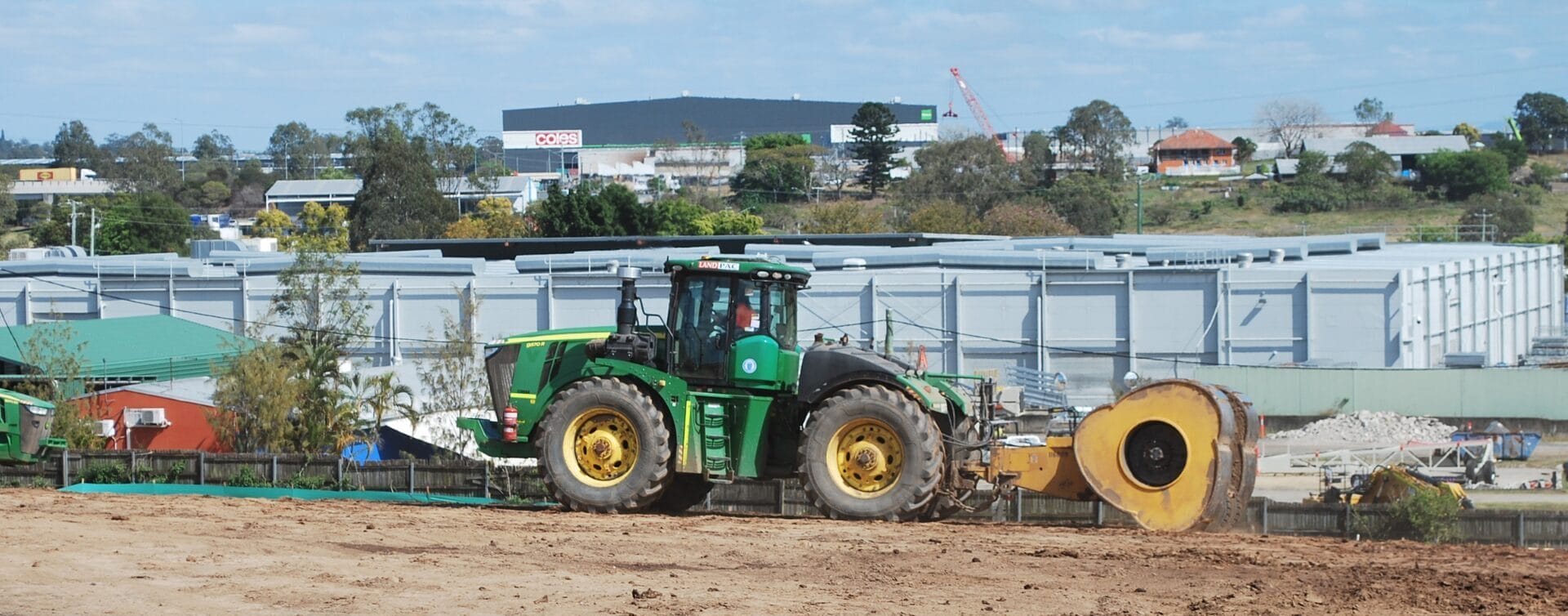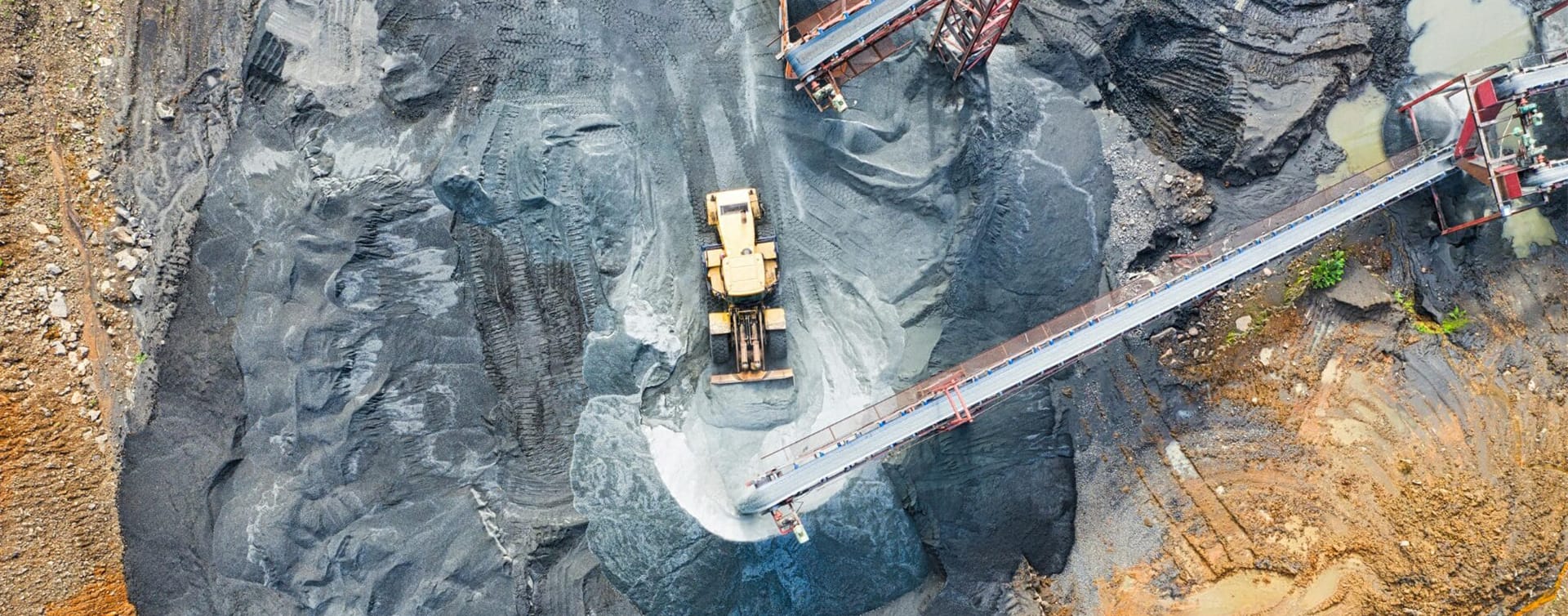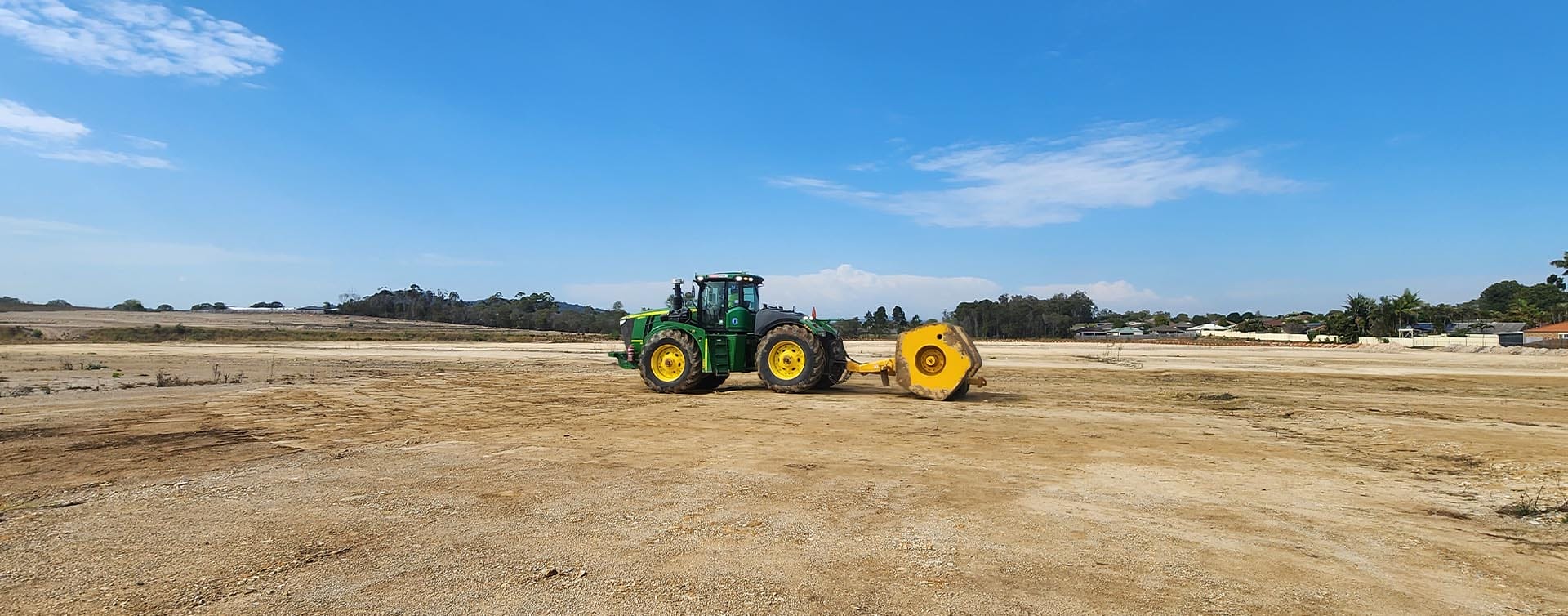Intelligent Compaction Measurement (ICM)
Intelligent Compaction Measurement (ICM): Quality Control for High Energy Impact Compaction (HEIC)
The world of construction has always been marked by its relentless pursuit of innovation, efficiency, and cost savings. From sensitive environmental dredging projects to intricate highway networks, each project brings its own unique challenges, demanding the use of cutting-edge technology, techniques, and know-how. One such innovation that has been quietly revolutionising the deep in-situ compaction industry is Intelligent Compaction Measurement (ICM). ICM is specifically tailored for High Energy Impact Compaction (HEIC) and can be referred to as Engineered Impact Compaction (ECM).
In the quest for stronger, more durable, and longer lasting infrastructure and the likes, ICM has emerged as the beacon of quality control. It represents a remarkable fusion of advanced sensor technology, data analytics, and construction machinery, all working together to deliver results that were once considered unattainable. So, fasten your seatbelts as we delve into the concept of ICM in conjunction with HEIC, exploring its uses, applications, and environmental benefits.
Understanding High Energy Impact Compaction (HEIC)
HEIC is often referred to as Impact Compaction (IC), it is an in-situ compaction technique used to improve soil strength, delivering enhanced structural integrity and longevity for the projects where it is utilised. HEIC is at the forefront of compaction technologies, allowing the use of shallow foundations by increasing the soils bearing capacity. The energy generated by HEIC far exceeds that of traditional 300mm lift compaction equipment and allows far greater Optimum Moisture Content ranges and much larger particle sizes to be compacted in-situ without the need to excavate and therefore providing a greener solution.




Intelligent Compaction Management (ICM): The Key to Efficiency
Previously referred to as Continuous Impact Response (CIR) and Continuous Impact Settlement (CIS) ICM is a software tool that aids geotechnical engineers with spatial variation and increases the confidence levels for areas that have not been tested on site. It involves the measured deceleration of the impact drums (g-force) for every impact blow to the soil with an integrated GPS location Average surface levels and differential settlements are also measured during this process. The continuous nature of this response is crucial for achieving optimal compaction results. Here’s how it works:
- Energy Transfer: By doing more passes over the in-situ soil, the impact drums normally decelerate quicker with increased number of surface passes which is a result of increased soil stiffness.
- Progressive Compaction: Before and after ICM measurements ensures that the quality control of the compaction can be progressively measured and 100% of the area assessed ensuring the confidence levels of the uniformity being achieved or not.
The Benefits of ICM
The following table outlines the key benefits of ICM during HEIC, highlighting its advantages in improving soil density, time efficiency, and uniformity in the compaction process.
Benefit | Description |
Improved Soil Strength | Intelligent Compaction Measurement is a quality control technology that helps better understand the improved soil strength parameters during HEIC. This helps geotechnical engineers to have a greater level of confidence for the spatial variation that exists on a site. |
Time Efficiency | HEIC is one of the most cost effective and productive compaction methodologies. ICM allows immediate downloads of mapped soils. |
Uniformity | The continuous application of the measured impact forces results immediate interpretation of mapped soils which allows rectification/remediation of poor soils to be dealt with. |
Applications for ICM
When applying ICM to projects where HEIC is carried out, there are several applications across various industries. The focus of using ICM with HEIC is to determine if the area compacted has achieved a more uniform state and allows geotechnical engineers to focus testing and investigations on areas that exhibit low g values (softer soils). Below is an outline of some of the primary applications as we see them:
- Road Construction (Including Mining applications)
- Foundation Construction
- Landfill Rehabilitation and Construction
- Dam Construction
- Airport Runway Construction
- Railway Track Bed Construction
- Pipeline Trench Backfill
- Retaining Wall Construction
- Recreational Facility Rehabilitation and Construction
- Slope Stabilisation
Intelligent Compaction Measurement is a quality control technology that plays an important role in aiding geotechnical engineers in the sign off process following HEIC and the associated tests.
Environmental Benefits
By utilising ICM in HEIC there are several environmental benefits, making it an attractive choice for construction projects with sustainability and environmental concerns in mind. Here are some of the key environmental advantages as we see them:
- Reduced Material Usage: by measuring the passes and the changes in the soil, ICM ensures the most effective use of equipment and time for the project at hand. This equates to less excavation or requirements for new materials to be added to the surface in addition to reducing the need to remove deleterious materials.
- Lower Energy Consumption: due to the real-time access to the compaction data obtained managers can ensure the machine is in the right place for the right number of time/passes required without the concern of over-working or working unnecessarily. This leads to lower greenhouse gas emissions and a smaller carbon footprint for construction projects.
- Reduced Construction Time: HEIC machines equipped with ICM can achieve the desired compaction levels quicker and more effectively than other methods. Not only reducing the amount of time on-site, but also reducing the overall disruption to the environment and nearby communities.
- Lower On-Going Maintenance Needs: ICM helps determine what has been achieved in the field. Ultimately HEIC reduces the need for ongoing maintenance and repairs, which can have environmental benefits in terms of resource usage and disruption.
- Inducing settlements: creating a reduction in the volume of export material off site.
Compacting in-situ material has major environmental benefits in that excavations are not required and therefore not exposing potential hazardous materials to either personnel or the environment. Sites where conventional compaction is carried out and hazardous material found, leads to long and expensive contracts especially finding a site to dispose of the contaminated materials.
Conclusion
Intelligent Compaction Measurement plays a pivotal role in the monitoring of the HEIC process. Its efficiency and quick turnaround of mapping results allows geotechnical engineers to make decisions on site on the same day which makes it a valuable tool in the construction industry. As technology and engineering technologies advance, HEIC coupled with ICM will continue to play an important role in shaping the infrastructure of tomorrow in a greener and more sustainable way.
Latest news

Uncontrolled vs Contaminated Fill | Why It Matters
Understand the difference between uncontrolled and contaminated fill, the risks of each, and how Landpac’s HEIC method delivers safe, stable ground.

High-Energy Impact Compaction in Australian Mining
From haul roads in WA to tailings dams in QLD, High-Energy Impact Compaction (HEIC) is reshaping ground improvement across Australia’s mining operations. Backed by Intelligent Compaction Measurement (ICM), HEIC delivers faster, deeper, and more reliable results, boosting safety, sustainability, and cost-efficiency in some of mining’s toughest conditions.

Understanding High Energy Impact Compaction (HEIC)
High Energy Impact Compaction (HEIC) revolutionises ground improvement with its ability to achieve superior soil density and stability. Unlike traditional methods, HEIC uses advanced rollers and compaction technology to penetrate deeper soil layers.
